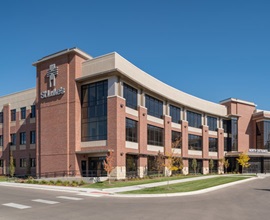
What is Roux-en-Y Gastric Bypass?
During laparoscopic Roux-en-Y gastric bypass, the surgeon separates a small stomach pouch from the upper stomach, significantly reducing the amount of food it can hold. The pouch is surgically attached to the middle section of small intestine, bypassing the rest of the stomach and the upper portion of the small intestine (duodenum), which limits calorie absorption. While a normal stomach holds about three pints, the new stomach pouch is initially only the size of an egg, growing to the size of a fist after 6-12 months.
Advantages of Roux-en-Y Gastric Bypass
- The small stomach size helps patients feel full more quickly, which reduces food intake.
- Gastric bypass produces positive metabolic changes in many organs as a result of surgical alterations. These metabolic changes may result in the resolution of type II diabetes and high blood pressure, and may improve cholesterol levels.
- Average weight loss is approximately 60-70% of excess body weight at one year.
Additional Considerations for Roux-en-Y Gastric Bypass
Your success with Roux-en-Y gastric bypass will depend greatly on your involvement in an exercise program and adherence to nutritional guidelines after surgery. You play a critical role in the long-term success of your surgery, which is not a quick fix but a tool on your path to a healthier life.



